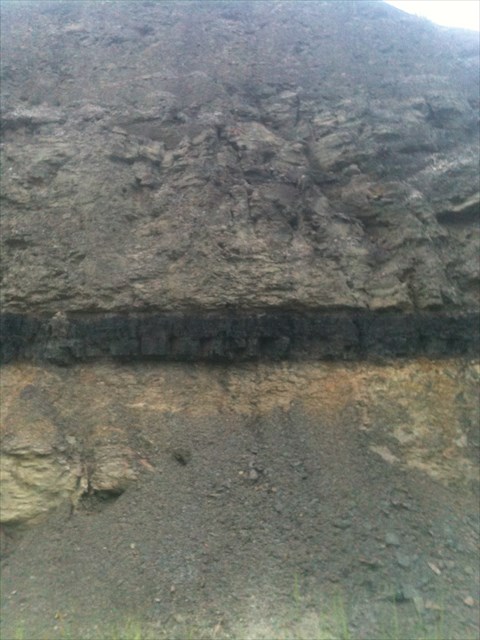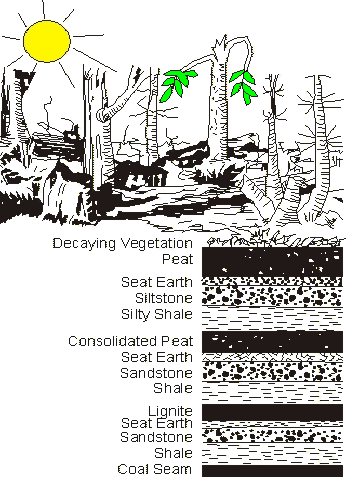
It is generally accepted that coal originated from plant debris including ferns, trees, bark, leaves, roots and seeds some of which accumulated and settled in swamps. This unconsolidated accumulation of plant remains is called peat. Peat is being formed today in marshes and bogs. Layers of peat, covered by sediment receiving heat and pressure from the subsidence of the swamps, went through a metamorphic process called coalification to form coal.

The metamorphic process is thought to have occurred in several stages. The conditions of the metamorphic process and the swamps and bogs greatly affected the formation of the coal. Several factors which greatly affected the content, makeup, quality, and rank of the coal were: Temperature Pressure Time Layering process Fresh water/sea water Swamp acidity Types of plant debris Types of sediment cover Coal first formed from peat has a high moisture content and a relatively low heating value.
Coal Rank Coal usually is divided into two main classes - anthracite (hard coal) and bituminous (soft coal).
The coal in this area is bituminous coal that is from the Pennsylvanian Era (280-310 mya). A geologic map of the state can be found on the Kentucky Geologic Survey’s website. Bituminous coal is a fairly soft coal. It is of higher quality than lignite coal but poorer quality than the harder anthracite coal. Bituminous coal is an organic sedimentary rock formed by the compression of peat bog material present in the lush growth found in the area during the Carboniferous Period. The carbon content of bituminous coal is around 60-80%; the rest is composed of water, air, hydrogen, and sulfur. The sulfur found in coal has caused it to receive controversy as a fuel source because of emissions of sulfur compounds into the air when it is burned When anthracite was formed, it was squeezed under greater heat and pressure than was bituminous. As a result, anthracite contains the highest percentage of carbon and the lowest percentage of moisture. Anthracite makes up only a small part of the world's supply of coal. About half of the world's coal reserve is bituminous coal. (See U.S. Coal Reserves map.) Remaining coal reserves are even softer (lignite and sub-bituminous).
In order to log this EC please forward the answers to these questions via email.
1. Given the texture of this seam what type of coal has been produced here?
2. Are there any indications of the presence of shale?
3. In your opinion could this location be mined ?
4. At this location, is there a gaseous smell and if so what type of gas is it? ( a little research will be required to answer this one.)
5. Although not a requirement a picture of you and/or your gpsr would be nice.